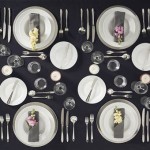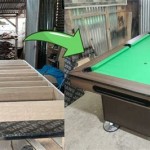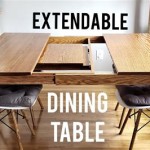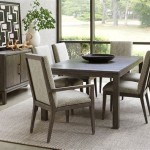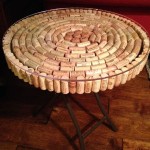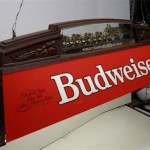Fire Pit Table Top: A Comprehensive Guide
A fire pit table top is a functional and aesthetically pleasing addition to outdoor living spaces. It transforms a fire pit, primarily designed for warmth and ambiance, into a versatile piece of furniture suitable for dining, entertaining, and relaxation. This article will explore the various aspects of fire pit table tops, including their materials, types, benefits, considerations for selection, and maintenance.
Materials Used in Fire Pit Table Tops
The selection of materials for a fire pit table top is paramount to its durability, appearance, and overall performance. The material must withstand the heat generated by the fire pit while providing a safe and stable surface. Common materials include:
Stone: Stone, particularly granite and marble, is a popular choice due to its natural beauty and heat resistance. Granite is known for its durability and resistance to scratches and stains. Marble offers an elegant appearance but requires more maintenance to prevent staining and etching from acidic substances. Both materials are heavy and require a robust fire pit structure for support. The cost of stone table tops can be significant, reflecting their premium quality and aesthetic appeal.
Tile: Tile provides a wide range of design possibilities with various colors, patterns, and textures. Ceramic and porcelain tiles are common choices because of their heat resistance and ease of cleaning. Grout lines, however, can be prone to staining and require regular maintenance. The durability of tile depends on its quality and the underlying support structure. Consider the climate and potential for freeze-thaw cycles, which can cause damage to the tile and grout.
Concrete: Concrete table tops offer a modern and industrial aesthetic. They are highly durable and can be customized with various colors and finishes. Concrete can be sealed to protect against stains and moisture. The weight of concrete is a significant consideration, necessitating a sturdy fire pit base. Properly sealed and maintained concrete table tops can provide years of reliable service.
Metal: Metal table tops, typically constructed from stainless steel or aluminum, offer a sleek and modern look. Stainless steel is resistant to rust and corrosion, making it a suitable choice for outdoor environments. Aluminum is lightweight and also corrosion-resistant but may be more prone to dents and scratches. Metal table tops can become hot to the touch when the fire pit is in use, requiring caution when handling food or drinks placed on the surface. Consider the thickness and gauge of the metal to ensure adequate strength and heat resistance.
Wood: While less common due to potential fire hazards, wood can be used for fire pit table tops, particularly for creating surrounds or serving as temporary covers when the fire pit is not in use. It is essential to select a wood species that is naturally resistant to moisture and decay, such as cedar or teak. Wood table tops should be treated with a fire-retardant coating and kept a safe distance from the flames. Consider using wood as an accent or decorative element rather than the primary surface directly over the fire.
Types of Fire Pit Table Tops
Fire pit table tops are available in various configurations to suit different needs and preferences. The design and functionality of the table top can significantly enhance the usability and aesthetic appeal of the fire pit.
Round Table Top: Round table tops are a classic and versatile choice that complements most fire pit designs. They provide equal access to the fire for all seated around the pit, promoting a sense of inclusivity. Round table tops are suitable for both small and large fire pits, and they can be easily customized with different materials and finishes.
Square or Rectangular Table Top: Square or rectangular table tops offer a more structured and modern aesthetic. They are well-suited for seating arrangements along one or two sides of the fire pit. Rectangular table tops can be particularly useful for providing a longer surface area for placing food and drinks. The sharp angles of square and rectangular table tops may require additional considerations for safety, particularly in environments with children.
Convertible Table Top: Convertible table tops offer the flexibility to transform the fire pit into a standard table when the fire is not in use. These table tops typically consist of multiple sections that can be easily removed or replaced to expose the fire pit area. Convertible table tops provide a dual-purpose functionality, maximizing the usability of the outdoor space.
Rim Table Top: A rim table top is a narrow surface that surrounds the fire pit opening, providing a small area for placing drinks or snacks. Rim table tops are typically integrated into the design of the fire pit and are not intended for extensive dining or entertaining. They serve primarily as a safety feature and a convenient surface for incidental items.
Full Table Top: A full table top completely covers the fire pit opening, transforming it into a standard outdoor table. This type of table top is useful for protecting the fire pit from the elements when it is not in use and for providing a flat surface for various activities. Full table tops can be made from a variety of materials and can be easily removed when the fire pit is needed.
Key Considerations When Selecting a Fire Pit Table Top
Selecting the appropriate fire pit table top requires careful consideration of several factors, including size, shape, material, safety, and maintenance.
Size and Shape: The size and shape of the table top should be proportional to the size and shape of the fire pit. A table top that is too small may not provide adequate surface area, while a table top that is too large may overwhelm the fire pit. Consider the intended use of the table top when determining the appropriate size and shape. For dining, a larger table top is necessary, while for casual entertaining, a smaller table top may suffice.
Material Compatibility: The material of the table top should be compatible with the fire pit's design and the surrounding environment. Choose a material that is durable, heat-resistant, and weather-resistant. Stone, tile, concrete, and metal are all suitable options, depending on the desired aesthetic and functional requirements. Avoid using combustible materials, such as wood, directly over the fire pit.
Safety Considerations: Safety is a paramount consideration when selecting a fire pit table top. Ensure that the table top is securely attached to the fire pit and that it provides a stable surface. Avoid using materials that can become excessively hot to the touch when the fire pit is in use. Consider the potential for children or pets to come into contact with the table top and take appropriate precautions to prevent burns or injuries. Use fire-resistant materials and maintain a safe distance between the fire pit and any combustible structures.
Maintenance Requirements: Consider the maintenance requirements of the table top material before making a selection. Some materials, such as marble, require more frequent cleaning and sealing than others, such as granite. Choose a material that is easy to clean and maintain, and be prepared to perform regular maintenance to ensure its longevity and appearance. Protect the table top from the elements when it is not in use, and avoid using harsh chemicals or abrasive cleaners that can damage the surface.
Budget: The cost of a fire pit table top can vary widely depending on the material, size, and design. Establish a budget before beginning the selection process and consider the long-term value and durability of the table top. While some materials may be more expensive initially, they may offer better performance and longevity in the long run. Compare prices from different vendors and consider the cost of installation and maintenance when making a decision.
Weight Capacity The weight capacity of the fire pit structure is crucial when selecting a table top, particularly for heavier materials like stone and concrete. Verify that the base can adequately support the table top's weight to prevent structural damage or instability. Consider the distribution of weight and ensure even support across the fire pit's perimeter.
Heat Resistance Ensure that the table top material is rated for high-temperature environments. Materials susceptible to cracking or warping under heat exposure may compromise the table top's structural integrity and create safety hazards. Inquire about the material's heat resistance specifications and select a table top explicitly designed for fire pit applications.
Drainage If the fire pit and table top will be exposed to rain or snow, consider the drainage capabilities of the design. Ensure that water can effectively drain away from the table top's surface to prevent pooling and potential damage from freezing temperatures. Incorporate drainage holes or consider a sloped surface to facilitate water runoff.
UV Resistance Prolonged exposure to sunlight can cause discoloration or degradation of some table top materials. Select materials with inherent UV resistance or apply a protective coating to mitigate the effects of sun exposure. Regularly inspect the table top for signs of fading or cracking and reapply protective coatings as needed.
Aesthetic Integration The table top should complement the overall aesthetic of the outdoor space. Consider the existing furniture, landscaping, and architectural style when selecting a table top material and design. Select a table top that enhances the visual appeal of the fire pit and creates a cohesive outdoor living environment.
Accessibility Ensure that the table top design allows for easy access to the fire pit's controls and fuel source. Avoid table top configurations that obstruct access to the burner, gas valve, or propane tank. Consider incorporating access panels or removable sections to facilitate maintenance and adjustments.
Warranty and Support Inquire about the manufacturer's warranty and available support for the table top. A comprehensive warranty provides assurance against defects in materials and workmanship. Verify the manufacturer's reputation and customer service capabilities to ensure prompt and reliable assistance if needed.
DIY vs. Professional Installation The complexity of the table top installation may influence the decision to pursue a DIY approach or hire a professional. Heavier materials or intricate designs may require specialized tools and expertise. Assess personal skills and available resources to determine the most appropriate installation method.
Local Building Codes Check local building codes and regulations regarding fire pit installations and table top requirements. Some jurisdictions may have specific restrictions on materials, dimensions, or proximity to structures. Ensure compliance with all applicable codes to avoid potential fines or enforcement actions.

28 Outdoor Tabletop Fireplace Black Threshold Target

Diy Fire Pit Table Top The Lilypad Cottage

The Do S And Don Ts Of A Fire Pit Table Top Lilypad Cottage

Custom Fire Pit Table Top Cover 20 36

Kante 18 In L Concrete Rectangle Table Top Fire Pit Bowl Portable Rubbing Fireplace Denatured Smores Maker Ct Fp 001 C91948 The Home Depot

Allen Roth 7 In W 40000 Btu Black Portable Tabletop Steel Propane Gas Fire Pit The Pits Department At Com

12 Best Tabletop Fire Pits In 2024 Top Picks

Diy Fire Pit Table Top The Lilypad Cottage

The Do S And Don Ts Of A Fire Pit Table Top Lilypad Cottage

Fire Pit Table Top Cover Sea Island Forge

